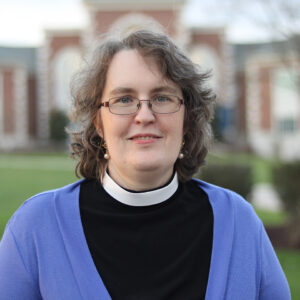My Lord and My God
Scripture – John 20:24-25 (NRSV)
But Thomas (who was called the Twin), one of the twelve, was not with them when Jesus came. So the other disciples told him, “We have seen the Lord.” But he said to them, “Unless I see the mark of the nails in his hands, and put my finger in the mark of the nails and my hand in his side, I will not believe.”
(Read these verses in context here.)
Focus
How do we account for doubt and struggle in our Christian walk—a question as pertinent this year as it has ever been? Is Thomas, for us, an example of trust, or of unbelief?
Devotion
On this Second Sunday of Easter, we hear how the disciples met together, still trying to process everything that has happened. The first meeting we hear about (in John 20:19-23) occurs the very evening after the Resurrection. Some of the disciples have gathered in a locked room because they are still very uncertain what is going on. Despite reports that Jesus has risen from the dead and appeared to Mary Magdalene and others, we know from Matthew 28:11-15 that a rumor was going around that Jesus’ followers had stolen his body. So some of his followers locked themselves away from the authorities and waited.
Into that waiting, Jesus comes—a beautiful scene where he breathes his peace over his disciples and shows them his hands and side, confirming that he is the very same person who was so painfully crucified. He also gives them somewhat startling marching orders: they are to go out into the world in the power of the Spirit and forgive sins (John 20:22-23).
This meeting has two results. One is that the other disciples tell this story to Thomas, who was not there when Jesus appeared, and he refuses to believe it. He wants to see Jesus in person, in the flesh. The second result is that the disciples don’t follow Jesus’s instructions—a week after the Resurrection they are still hanging out in the same house with the doors shut. (The fact that this part of the story occurs a week after Jesus rose from the dead is the reason it’s always read on the Second Sunday of Easter in my tradition.) Only this time, Thomas is there.
And Jesus comes back.
Again Jesus speaks peace over the disciples—who apparently needed an extra dose of it. And again he shows his hands and side, this time specifically to Thomas. As doubtful as Thomas was before, he responds now with a strong statement of belief: “My Lord and my God!” (John 20:28).
Down through the years, preachers and theologians have wrestled with Thomas, and some have even nicknamed him “Doubting Thomas”—a nickname that’s a bit unfair, given that when we finally leave him in this story he is most definitely “Believing Thomas.” How do we account for doubt and struggle in our Christian walk—a question as pertinent this year as it has ever been? Is Thomas, for us, an example of trust, or of unbelief? What does Jesus have to say to us who “have not yet seen and yet have come to believe” (John 20:29b)? What proof should we ask for? What proof do we need?
Does Thomas’s story tell us that it is all right if we doubt sometimes on the journey? Does it tell us that all doubts ultimately are answered by the person of Jesus Christ?
Does it, perhaps, tell us both?
Reflect
What proof do you need to respond to Christ in faith?
What is your response to Christ in the absence of proof?
Act
Listen today to Steve Taylor’s famous song “Harder to Believe Than Not To,” based on a phrase from Flannery O’Connor. (Lyrics and history of the song are here.) Wherever you are in your relationship between faith and doubt today, let the Risen Christ speak to you through this song.
Pray
Lord Jesus, I pray to see you, to believe, and to affirm that you are indeed my Lord and my God. Amen.
 Sign up to receive a Life for Leaders devotional each day in your inbox. It’s free to subscribe and you can unsubscribe at any time.
Sign up to receive a Life for Leaders devotional each day in your inbox. It’s free to subscribe and you can unsubscribe at any time.
Find all Life for Leaders devotions here. Explore what the Bible has to say about work at the unique website of our partners, the Theology of Work Project. Commentary on today’s Life for Leaders theme can be found here: In the Beginning Was the Word (John 1:1-18)

Jennifer Woodruff Tait
Editorial Coordinator
Jennifer Woodruff Tait (PhD, Duke University; MSLIS, University of Illinois; MDiv/MA Asbury Theological Seminary) is the copyeditor of and frequent contributor to Life for Leaders. She is also senior editor of


